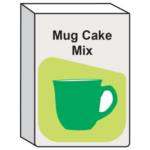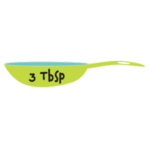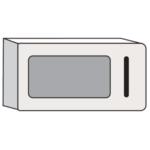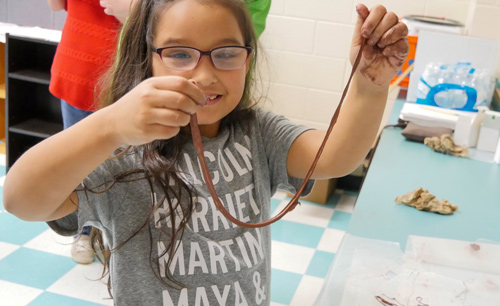Become a Baker!
What is a chemical reaction?
A chemical change is a change in which one or more new types of matter form. In a chemical change, two materials (reactants) will combine in new ways to form another material (product). An example of a chemical change is burning a match. The match and fire are two reactants that, when combined, will create an ash product. Some chemical reactions cause gases to be given off. Adding baking soda to vinegar does just that. The bubbles will create a new substance, a gas called carbon dioxide!
The most important thing to remember about chemical reactions: Once a chemical change has occurred, it almost never can be undone.
The Experiment
Bake your cake in a microwave-safe mug. Watch as the batter changes when it is heated in the microwave. When you cook it, a chemical reaction occurs. What do you think the reaction will cause?
Materials
Mug

Cake mix packet

3 TBSP water

Microwave
NOTE: All cake mix directions are not the same. Make sure you read the instructions provided on the cake packet.

Dinner Talk
- When you added the water to the cake mix what happened?
- When you microwaved the cake batter, what happened? How did it smell?
- What happened to the cake mix and water? What does the cake look like? What are the small holes in the cake?
- What were the reactants? What is the product that was made?
- ***Think about states of matter: How does the matter (cake batter) change after it has been heated?
Extra Enrichment
- Write about it using this sentence starter: Today I learned that baking a cake is really a science experiment…
Visit
- Watch this video to learn more about chemical reactions
Here is another fun chemical reaction experiment: SLIME
Directions
Mix equal amounts of water and school glue. For example ¼ cup water and ¼ cup school glue. With a fork slowly add clear liquid laundry detergent. What is happening?
Once you see the reactants begin to form a new product (slime), use your hands to begin to knead the new product. This may take about 2-3 minutes. With a caregiver’s permission, you can add things to the slime for variety such as food coloring or glitter. (This is optional)
Variation
Make slime using ¼ cup of liquid starch, ¼ cup of school glue, and food coloring (optional) with a caregiver’s permission—think about the chemical reaction that is taking place.




